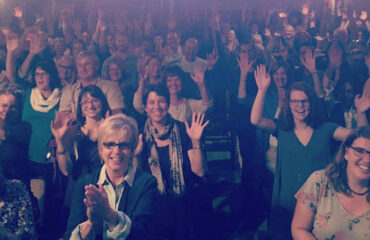

Grand Traverse Business, Supplement of the Record Eagle Fall 2018 By Casey Cowell
There is a new dynamic defining what it means to be “local.” In their book “The New Localism,” Bruce Katz and Jeremy Nowak explain how locally driven economic development organizations and efforts are having great impact on cities. We can all learn how to help our region reach its full potential when we tap into an entrepreneurial mindset.
Katz and Nowak’s underlying premise states that federal and state governments are increasingly ineffective. Federal funds get spent on entitlement programs – Social Security, Medicare and Medicaid – as well as paying on our national debt. This means less fiscal freedom for new directions and efforts, resulting in more obligations and responsibilities according to the purview of local government. In response, small, local government units are joining with civic, public and private entities to move more quickly on solutions to local problems.
In the past, policy design and implementation was top down. Experts of one variety or another ensconced in giant bureaucratic agencies created policies and programs full of rules and then imposed them from on high, often with little local engagement from the communities affected. Many different cities are now trying different solutions to address similar problems and issues.
They are learning from each other, sharing and quickly implementing solutions that are known to have been successful. It is working. As noted by social and political observer Yuval Levin, “The absence of easy answers is precisely a reason to empower a multiplicity of problem-solvers throughout our society, rather than hoping that one problem-solver in Washington gets it right.”
The defining dynamic shift in our society and economy is globalism. Many cities and urban areas are excelling in particular areas of focus. Similar to the specialization of labor during the last 100 years, today we are shifting to specialization of regions and communities. Success in one area, like robotics, tends to attract informed capital, interested and trained talent and all kinds of necessary and magnifying support services. This, in turn, tends towards further self-fulfillment. The outcome is that the few places with a focus on robotics become known globally as intellectual, developmental and commercialization centers for this technology and expertise which turns out to be value-creating for the entire area. The evolution of robotics in Pittsburgh and at Carnegie Mellon University since the late 1960s is an excellent example of this.
Thanks to technology, cities everywhere have easy shipping and communications access to cities everywhere. Katz and Nowak write, “Cities simultaneously exist within nations and transcend nations.” Once you become very good at something, it is much more likely today to be demanded by many markets in cities around the globe. That, in turn, means you can excel by focusing and extending in your area of excellence, further establishing your market position. Likewise, today’s communications technologies make it easy to establish strong relationships with advisors, suppliers, co-workers and customers anywhere and everywhere.
The point is that urban areas, even smaller ones, are developing areas of expertise that are recognized globally and are benefiting from it economically. Keep in mind that the impact of this communications technology makes it possible for talented people to live where they choose. Hello, Traverse City!
So how do we use these lessons to benefit our area? Successful New Localism cities and areas are solving local problems through multiple public, civic and private cooperative efforts and projects. For example, consider Grand Rapids’ highly successful economic development organization, The Right Place. The principal leadership has come from the private sector with multiple civic, public and governmental participants joining in to draw in all key players. An advantage of this approach is that no one governmental agency is necessarily in the lead, which oftentimes leads to the discomfort and lack of buy-in of other participating agencies. This kind of structure appears to lead to coordinated vision for the longer term as well as organic gains.
In other words, outcomes tend to steer clear of tax-subsidizing a huge stadium or factory for the benefit of some private interests in order to create jobs. Rather, the focus is on developing areas of strength, coordinating their enhancement and advancement and pulling together across relevant, appropriate constituencies to make it work. Pittsburgh’s government didn’t subsidize a giant robotics company (or car manufacturer) to move there. Instead, it played a supporting, expanding role, enabling Carnegie Mellon to aggressively get a technology lead and supported start-ups, spin-offs and other forms of commercialization … and they are a global leader today, as a university and as a city known for this deep expertise.
Regionally, Grand Rapids, Kalamazoo and Holland have all made great economic gains by coordinated economic development efforts, typically led by the private side and including all appropriate public and civic constituencies as well. Our area is lacking a coherent economic development vision and leadership. It is time we learned from our southern neighbors. Leadership from the private side, please step forward. Leadership from all our institutions and constituencies, please join in. We need a vibrant, energized, highly visible economic development organization that continually leads in evolving our direction and vision and inspires and coordinates planning and action that get us there. Let’s go!




